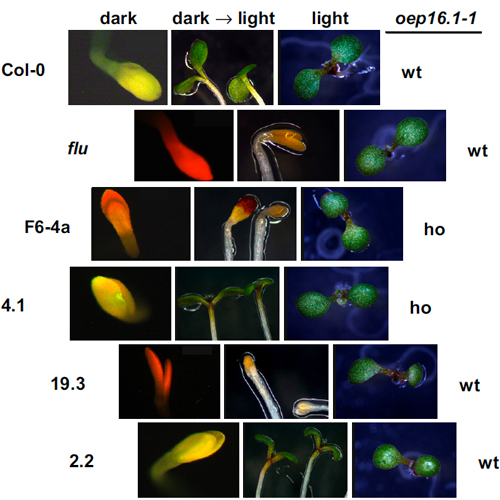A search for factors influencing etioplast - chloroplast transition
30-Jun-2009
Chloroplast biogenesis in angiosperm plants requires the light-dependent transition from an etioplast stage. A key factor in this process is NADPH:protochlorophyllide oxidoreductase A (PORA), which catalyzes the light-dependent reduction of protochlorophyllide to chlorophyllide. In a recent study the chloroplast outer envelope channel OEP16 was described to be involved in etioplast to chloroplast transition by forming the translocation pore for the precursor protein of PORA [Pollmann et al. (2007) Proc Natl Acad Sci USA 104:2019–2023]. This hypothesis was based on the finding that a single OEP16.1 knockout mutant in Arabidopsis thaliana was severely affected during seedling de-etiolation and PORA protein was absent in etioplasts. In contrast, in our study the identical T-DNA insertion line greened normally and showed normal etioplast to chloroplast transition, and mature PORA was present in etioplasts [Philippar et al. (2007) Proc Natl Acad Sci USA 104:678–683]. To address these conflicting results regarding the function of OEP16.1 for PORA import, we analyzed several lines segregating from the original OEP16.1 T-DNA insertion line. Thereby we can unequivocally show that the loss of OEP16.1 neither correlates with impaired PORA import nor causes the observed de-etiolation phenotype. Furthermore, we found that the mutant line contains at least 2 additional T-DNA insertions in the genes for the extracellular polygalacturonase converter AroGP1 and the plastid-localized chorismate mutase CM1. However, detailed examination of the de-etiolation phenotype and a genomewide transcriptional analysis revealed no direct influence of these genes on etioplast to chloroplast transition in Arabidopsis cotyledons.











